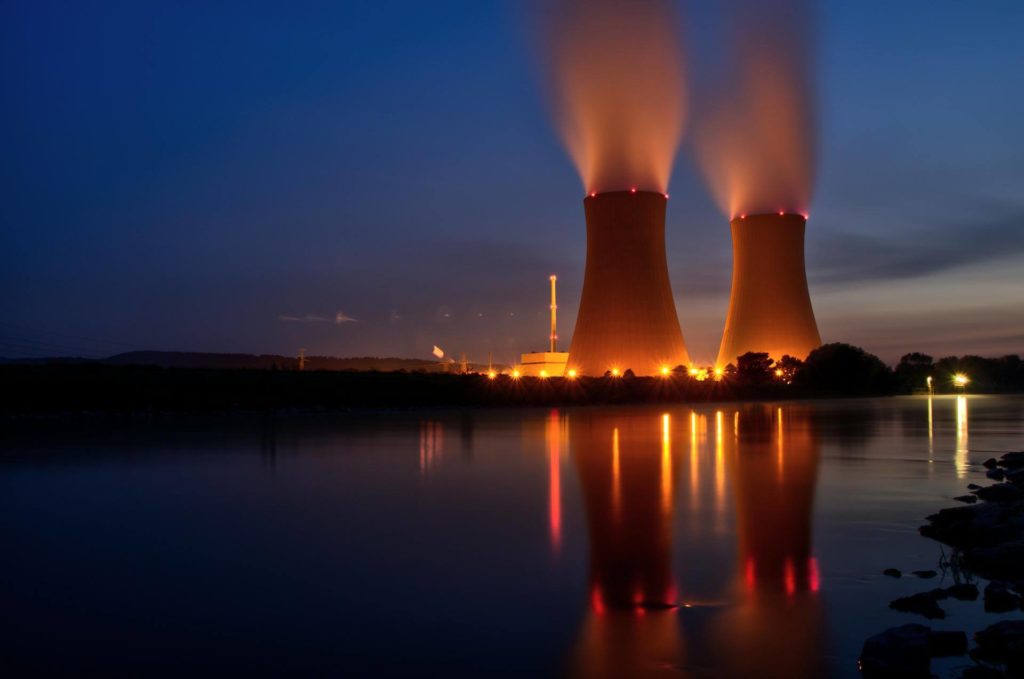Climate Now
Viewing 24 of 140 Podcast Episodes


Climate Now: Aug 23, 2022
Can oceans save us? Part II: The tricky science of ocean carbon capture
Did you know plastic bags were originally intended to be an environmental solution? The idea was to replace paper bags in an effort to reduce deforestation. In 1935, cane toads were another fix – they were introduced to Australian sugarcane plantations t


Climate Now: Aug 23, 2022
Can oceans save us? Part I: Using oceans to pull more CO2 from the air
More than 4 billion years ago, when Earth was still in its infancy, the atmosphere held more than 100,000 times the amount of CO2 it does today. Ever so slowly, that CO2 was absorbed into the oceans, where it reacted with rocks of the seafloor or was scavenged


Climate Now: Aug 9, 2022
Understanding EPA v. West Virginia: How will the Supreme Court’s ruling impact GHG regulation?
On June 30, 2022, the United States Supreme Court handed down a decision on the case “EPA v. West Virginia,” ruling in a 6-3 vote that the EPA exceeded its statutory authority by setting greenhouse gas emissions standards that would effectively require uti


Climate Now: Jul 26, 2022
Do we need nuclear power to solve climate change? Amory Lovins says no
In 2017, the V.C. Summer Nuclear Plant expansion – meant to hail the renaissance of nuclear power in the US – came screeching to a halt. The project, to build two new reactors at an existing South Carolina facility, was canceled after being delayed


Climate Now: Jul 12, 2022
How can you save money while decarbonizing your building?
Heating, cooling and electrifying buildings produces nearly one fifth of global greenhouse gas emissions, but by employing existing energy efficient technologies and switching to renewables, we could cut 87% of building-related emissions by 2050. So, how do we


Climate Now: Jun 21, 2022
Is there a profitable approach to carbon capture and storage?
In the international carbon offset market, the average price of removing one tonne of CO2 from the atmosphere is still below $15 USD, nowhere near enough to cover the costs of carbon capture and storage (CCS). As Dr. Sheila Olmstead (University of Texas, Austi


Climate Now: Jun 14, 2022
Concrete, steel and plastics: Paths to a greener industrial sector
Each year, we produce about 30 billion tonnes of concrete globally. That’s nearly 10,000 pounds, or more than 2 entire cars-worth of concrete, per person, per year. We produce enough steel to build more than 2700 Empire State Buildings annually. We produ


Climate Now: Jun 7, 2022
Are we undervaluing energy efficiency as a decarbonization strategy?
Are we underestimating the potential of increased efficiency? It wouldn’t be the first time. In 2021, the International Energy Agency and the U.S. Energy Information Administration forecasted a 50% increase in global energy demand by 2050. Such forecasts hav


Climate Now: May 31, 2022
Financial innovations for climate and clean energy impact
In the 2019/2020 fiscal year, the global climate finance sector reached a record 632 billion US dollars. Unfortunately – that is a little short of the more than $3 trillion US dollars needed each year to keep warming under 2 degrees C, according to the I


Climate Now: May 23, 2022
How to meet electricity demand while greening the grid
Lawrence Livermore National Lab, Princeton University, and the IPCC have all published proposed climate mitigation pathways: strategies for economically reaching net-zero emissions by mid-century for California, the U.S., and the world, respectively. And they


Climate Now: May 17, 2022
Will the clean energy transition be cheaper than we thought?
The recent working paper by Rupert Way, Matthew Ives, Penny Mealy, and Doyne Farmer, Empirically grounded technology forecasts and the energy transition, suggests that the high estimates of the expense to transition to renewable energy have been inflated, and


Climate Now: May 9, 2022
Diluting dependence on Russian oil: How renewable energy can defund a war
Among the top importers of Russian oil are the EU, Germany, Italy, The Netherlands, and France. The EU accounted for 71% of oil imports from Russia 2 months after the war in Ukraine began. But cutting off oil and gas imports from Russia completely can pose gre


Climate Now: May 2, 2022
The bottom line on sustainable shipping: Can the shipping industry reach zero emissions?
If the international shipping sector were a country, it would be the sixth largest CO2 emitting nation in the world. Every year, 11 billion tons of goods – about 80% of all the goods we use or consume – reach us by ship, emitting nearly a billion t


Climate Now: Apr 25, 2022
Buried treasure: Unearthing the power of the soil carbon bank
Soil – that mixture of degraded bedrock, decomposing organic matter, and microorganisms that nourishes the root systems of plants and trees – already holds twice as much CO2 as the earth’s atmosphere and vegetation, combined. And by changing


Climate Now: Apr 19, 2022
How can water reuse help solve the global water crisis?
Today, 26% of the global population – about 2 billion people – live without reliable access to safe drinking water. And, as climate change worsens, the availability of fresh water will only decrease. By 2050, as many as 3.2 billion people could


Climate Now: Apr 12, 2022
Climate risk reporting: Why an SEC mandate makes sense
The U.S. Securities and Exchange Commission wants to standardize climate risk reporting. What does that mean? On March 21, 2022 the SEC released a proposal for a new rule: that publicly traded companies will have to provide disclosures about how the changing


Climate Now: Mar 29, 2022
Can ammonia or wind propel carbon-free shipping?
In the race for decarbonization, the shipping industry faces major challenges. Fuel is cheap, almost half the price of gasoline. And, most ships last between 20-25 years, meaning that the turnover to cleaner shipping could take far longer than road transportat


Climate Now: Mar 22, 2022
How the electricity grid works
One of the most efficient ways to get to a net-zero economy is to generate electricity from renewable sources, and then make as many things run on electricity as possible. But, as more end-use services (transportation, heating, industry) are electrified, and


Climate Now: Mar 8, 2022
A venture capitalist’s perspective on the evolution of green transportation
In 2021 alone, more than $32 billion dollars were invested in green-technology startups, a four-fold increase from five years earlier. But how far will those dollars go? Only about 25% of venture-backed startups actually make the transition from an inn


Climate Now: Feb 22, 2022
Can We Achieve 100% Electric Car Sales by 2030?
What will it take to get 100% of new car sales to be electric by 2030? Is it consumer demand? Is it political pressure? How about we just increase both? The Zero Emission Transportation Association (ZETA) is the first industry-backed coalition advocating f


Climate Now: Feb 18, 2022
How to Scale Up Carbon Capture and Storage
From 2015 to 2020, the installed capacity of renewable electricity increased 50%, reaching nearly 12% of global electricity consumption. The number of electric vehicles sold in 2021 was 13 times more than in 2015, now making up nearly 9% of the new car sales.


Climate Now: Feb 8, 2022
Is micromobility the future of urban transportation?
How can we better design our cities and suburbs so that they are centered around humans, not cars? Cars do not need to be the primary method of urban transportation, and alternatives such as public transportation and micromobility have benefits far beyond simp


Climate Now: Feb 1, 2022
An insider’s perspective on advancing US climate policy
Climate policy at the federal level is integral to mitigating the climate crisis. Unfortunately, the United States has had a hard time so far passing ambitious climate legislation. Why is that? From the outside, the situation often seems hopeless. But what doe


Climate Now: Jan 25, 2022
Re-imagining Heavy-Duty Trucking with Hydrogen and Carbon Capture
Heavy-duty, long-haul trucks – known as Class 8 trucks – account for more than 1 billion tons of carbon dioxide emissions worldwide each year. Electrification, while a practical option for most of the trucking industry (see last week’s episo